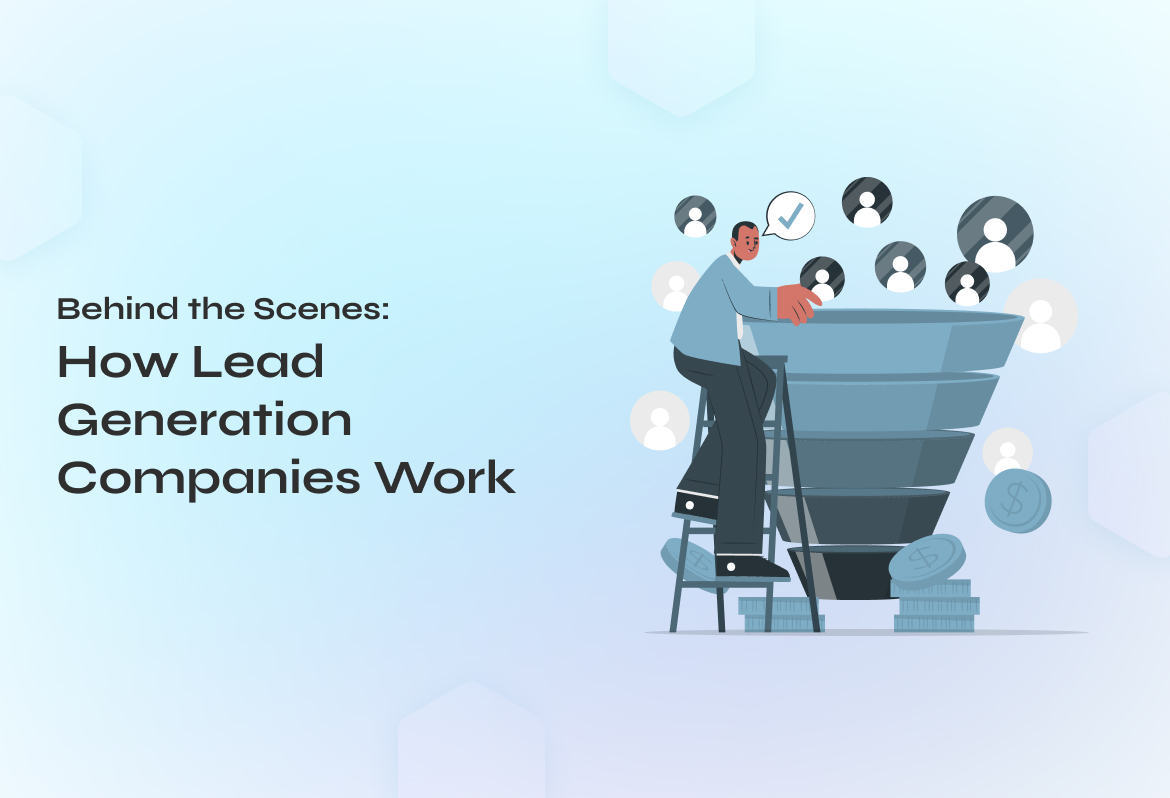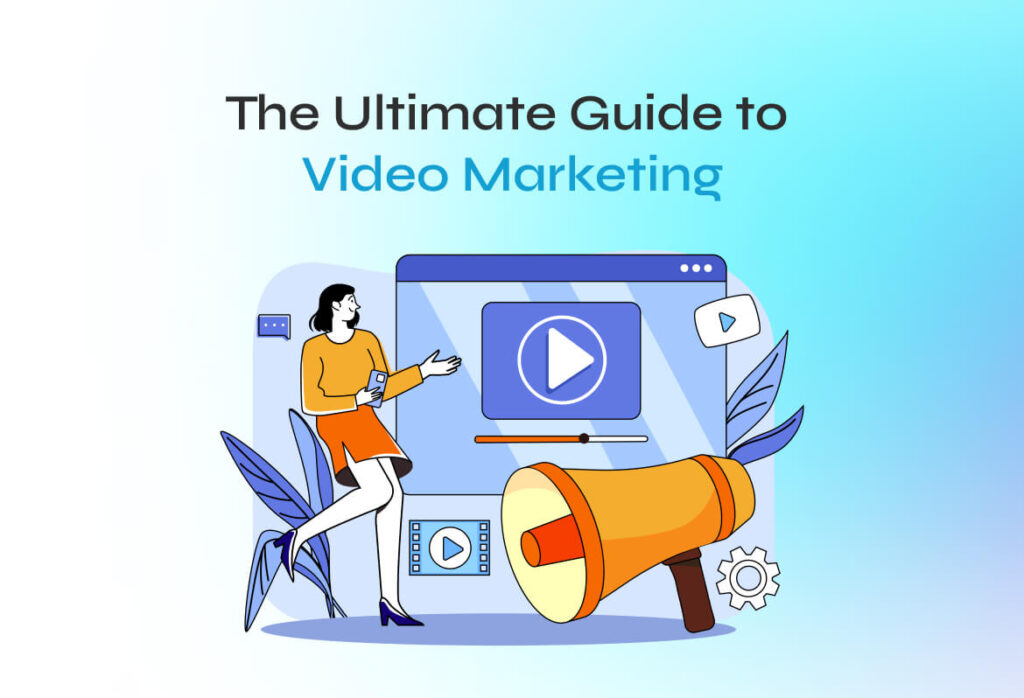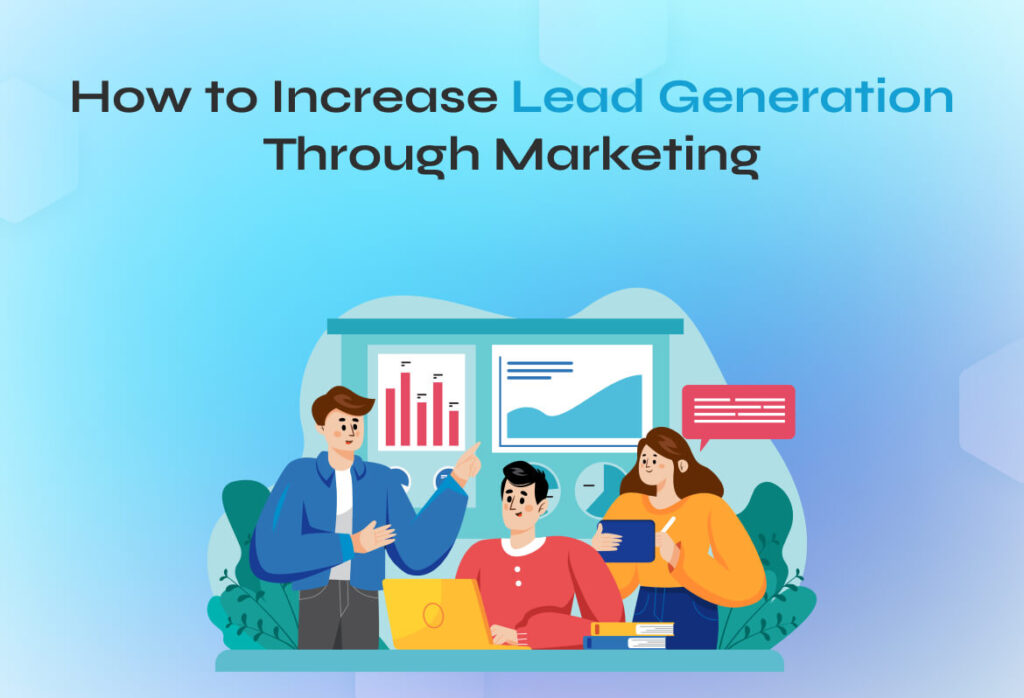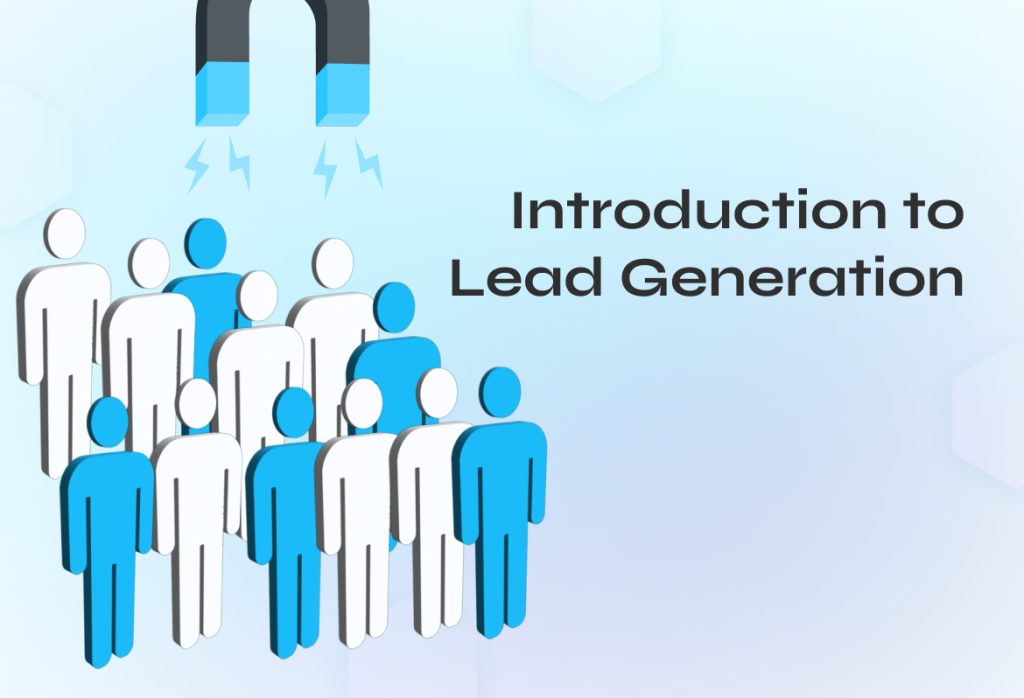In an era where the competition for attention online has never been fiercer, understanding and implementing effective lead-generation strategies is paramount for businesses aiming to thrive. At the core of these strategies often lies a specialized entity: the lead generation company. But what exactly does such a company do, and how can it transform the way businesses attract and retain customers? This article will explain how lead generation companies work, offering insights into creating a robust lead generation system and detailing the process behind it.
Understanding Lead Generation
At its simplest, lead generation is the process of attracting and converting a general audience and prospects into someone interested in your company’s products or services. It’s a fundamental concept that plays a crucial role in a business’s growth strategy. From capturing the interest of potential customers through various channels like social media, email marketing, search engine optimization (SEO), to engaging them with compelling content and offers, lead generation encompasses a broad range of activities designed to build a pipeline of potential customers.
The essence of lead generation lies in its ability to bridge the gap between a business and its potential customers. In today’s digital age, where the buyer’s journey has become increasingly complex, crafting targeted, effective lead generation strategies is key to standing out and capturing consumer interest. By leveraging diverse channels tailored to where the target audience spends their time, businesses can significantly enhance their visibility and attractiveness to prospective leads.
How Lead Generation Companies Work
Lead generation companies are the bridge between your business and potential customers. They specialize in finding, attracting, and engaging individuals who have shown an interest or may be interested in what your business offers. But how exactly do these companies operate to ensure a steady stream of leads?
Firstly, these companies start by deeply understanding your business, including your products, services, and your ideal customer profile. This foundational step is crucial as it guides the entire lead generation strategy, ensuring that efforts are focused on attracting the right audience.
Using this information, lead generation companies then employ a variety of techniques and channels to attract potential leads. This could range from content marketing and search engine optimization (SEO) to pay-per-click (PPC) advertising and social media campaigns. The goal here is to create multiple touchpoints across different platforms where your target audience will most likely be found.
Engagement is key. Once potential leads are identified, lead generation companies work to engage them through personalized communications, valuable content, and compelling offers. This is where the art of nurturing comes into play, gradually moving leads down the sales funnel until they’re ready to make a purchase or engage with your sales team.
Technology and data play a significant role in this process. Lead generation companies leverage sophisticated tools and software to track, analyze, and optimize their strategies in real time. This data-driven approach allows for continuous improvement, ensuring that strategies are always aligned with changing market trends and customer behaviors.
Creating a Lead Generation System
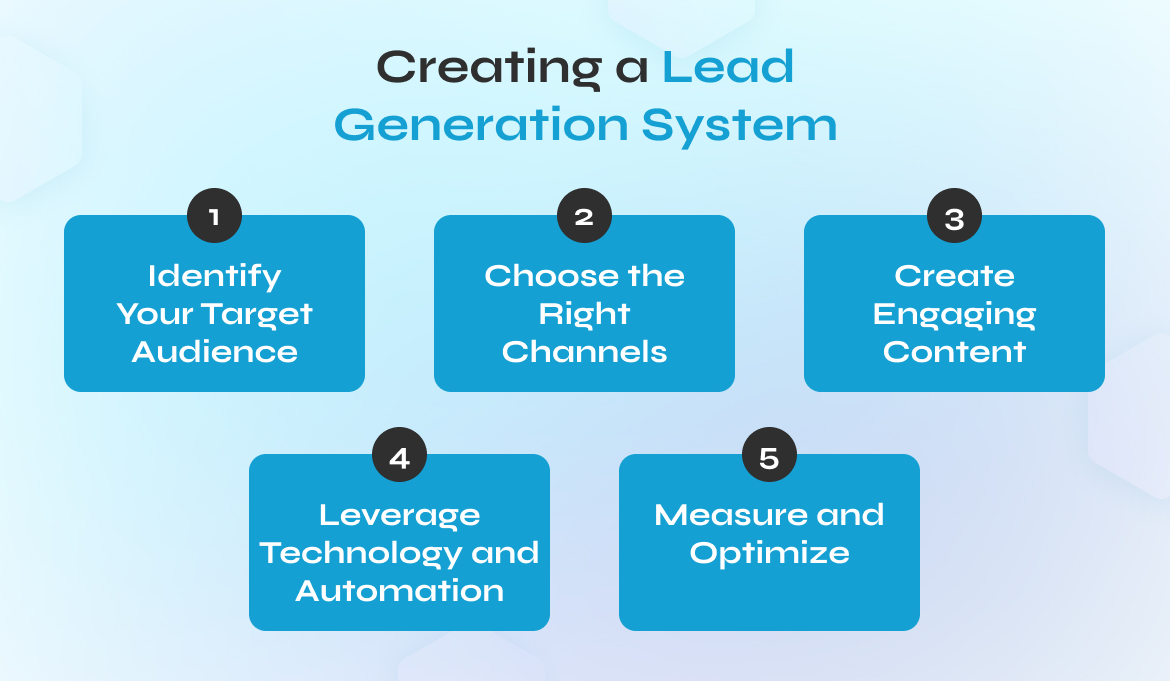
An effective lead generation system is a combination of strategies, tools, and processes designed to attract potential customers and guide them towards making a purchase decision. Building this system requires careful planning, execution, and ongoing optimization. Below are the expanded steps and considerations:
1. Identify Your Target Audience
- Market Research: Conduct thorough market research to understand who your ideal customers are. This includes demographic data, psychographic information, and behavioral insights. Utilize surveys, interviews, and analysis of existing customer data to paint a detailed picture of your target audience.
- Buyer Personas: Develop detailed buyer personas that represent your ideal customers. Include information such as challenges, goals, preferred communication channels, and decision-making processes. These personas will guide your lead generation efforts, ensuring they are tailored to attract the most relevant leads.
2. Choose the Right Channels
- Channel Selection: Evaluate the various channels available for lead generation, including social media, email, search engines, and traditional advertising. Consider where your target audience spends their time and how they prefer to consume information.
- Multichannel Strategy: Implement a multichannel lead generation strategy. By engaging potential leads across multiple platforms, you increase the chances of capturing their attention and initiating engagement. Ensure consistency in messaging across all channels for a cohesive brand experience.
3. Create Engaging Content
- Content Plan: Develop a content plan that addresses the interests and needs of your target audience at different stages of the buyer’s journey. This could include blog posts, ebooks, videos, infographics, and webinars. Each piece of content should provide value and encourage further engagement with your brand.
- SEO Optimization: Optimize your website content for search engines to improve visibility and attract organic traffic. Use relevant keywords, meta descriptions, and engaging titles to make your content easily discoverable by those searching for solutions your business offers.
4. Leverage Technology and Automation
- CRM and Marketing Automation Tools: Invest in customer relationship management (CRM) and marketing automation tools. These technologies help manage and analyze lead data, automate repetitive tasks, and personalize lead interactions, making the lead generation process more efficient and effective.
- Analytics and Tracking: Utilize analytics and tracking tools to monitor the performance of your lead generation activities. This data will provide insights into what’s working and what isn’t, allowing for informed decision-making and strategy adjustments.
5. Measure and Optimize
- Performance Metrics: Establish key performance indicators (KPIs) to measure the success of your lead generation efforts. Common metrics include lead quantity, lead quality, conversion rates, and ROI.
- Continuous Improvement: Regularly review performance data and gather feedback from leads and customers. Use this information to refine your strategies, experiment with new tactics, and continuously improve the effectiveness of your lead generation system.
Ensuring System Flexibility
An effective lead generation system is not set in stone; it should be flexible enough to adapt to changing market conditions, audience behaviors, and technological advancements. Regularly revisiting and revising your strategies ensures that your lead-generation efforts remain relevant and effective over time.
By thoroughly understanding and implementing these expanded steps, businesses can create a robust lead generation system that consistently generates high-quality leads. This system forms the backbone of successful marketing and sales strategies, driving growth and profitability in the competitive business landscape.
Lead generation companies tailor these steps to fit the unique needs of each business they work with, employing their expertise to maximize the effectiveness of each component of the lead generation system.
The Lead Generation Process Explained
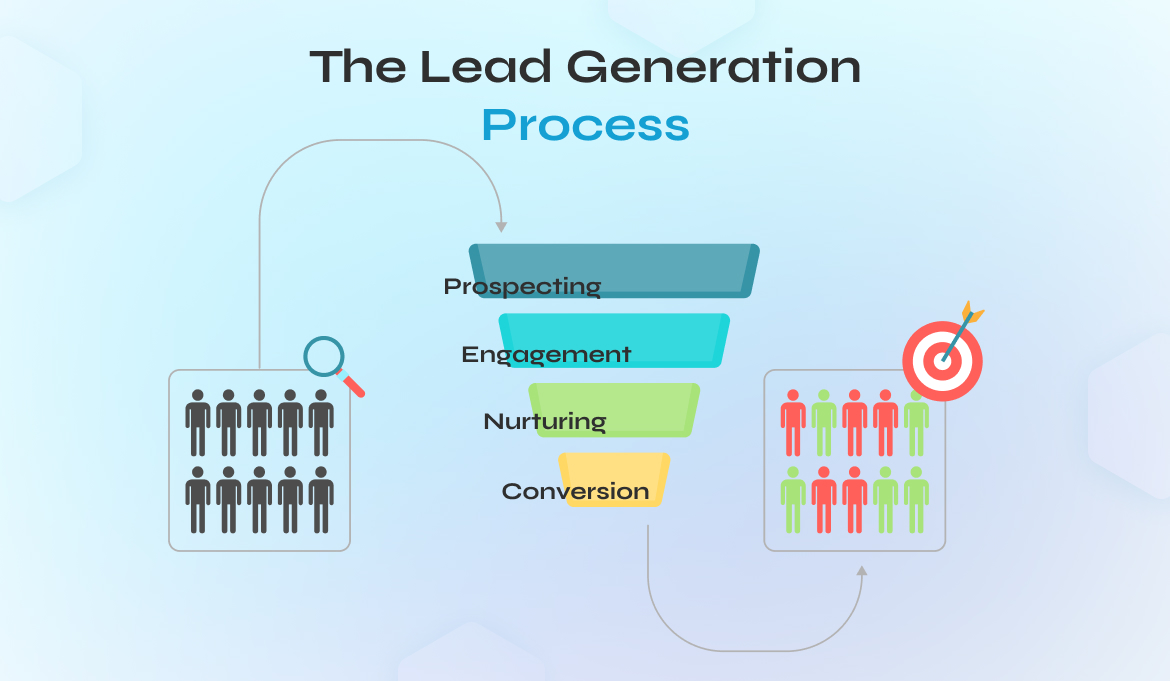
The lead generation process is a multi-faceted journey that transforms strangers into interested prospects and, ultimately, loyal customers. It is meticulously designed to attract, engage, and convince potential leads of the value your business offers. Here’s a closer look at each stage:
1. Prospecting
- Identifying Potential Leads: The process begins with identifying individuals or organizations that fit your ideal customer profile. This involves extensive research and the use of sophisticated tools to scan social media, forums, professional directories, and other platforms for potential leads.
- Data Collection and Analysis: Lead generation companies gather data on these prospects, including contact information, demographic details, and behavioral insights. This data is analyzed to prioritize leads based on their likelihood to convert.
2. Engagement
- Initial Contact: Engagement strategies are implemented to make the first contact with potential leads. This might involve sending personalized emails, targeted social media ads, or engaging content that addresses their specific needs or interests.
- Building Relationships: The focus at this stage is on building a relationship with the prospect. This involves providing value through insightful content, answering questions, and demonstrating how your product or service solves their problem.
3. Nurturing
- Educating the Prospect: Lead nurturing involves educating the prospect about your product or service. This is done through a series of targeted communications designed to address common concerns, provide valuable information, and gradually guide the prospect through the buying journey.
- Personalization: Effective nurturing is highly personalized. Lead generation companies use the data collected to tailor communications, ensuring that messages resonate with the specific interests and needs of each lead.
- Building Trust: Consistent and valuable communication helps build trust with the prospect. This stage is crucial for establishing your brand as a trusted advisor, making it easier for the lead to consider making a purchase.
4. Conversion
- Call-to-Action (CTA): Once a lead is sufficiently nurtured and shows a high intent to purchase, they are presented with a strong call-to-action. This could be an invitation to schedule a demo, an offer for a free trial, or a compelling promotion that encourages them to take the final step.
- Closing the Sale: The conversion stage is where all the previous efforts culminate. It involves direct sales efforts, such as consultations, product demonstrations, or detailed discussions about pricing and packages.
- Feedback and Follow-Up: After a lead converts, lead generation companies often engage in follow-up communications to gather feedback, ensure customer satisfaction, and foster a relationship that encourages repeat business or referrals.
Key Metrics for Success
Understanding the effectiveness of each stage in the lead generation process involves tracking key performance indicators (KPIs), such as conversion rates, cost per lead, lead quality scores, and ROI. Continuous analysis and optimization of these metrics are essential for refining strategies and achieving sustained success in lead-generation efforts.
By breaking down the lead generation process into these detailed stages, businesses can better understand how to effectively attract, engage, and convert prospects. This approach allows for more targeted strategies and a higher likelihood of converting leads into loyal customers.
FAQs
What is a lead generation company?
A lead generation company helps other businesses get more customers by finding people interested in their products or services and encouraging them to learn more or make a purchase.
How do lead generation companies find potential customers?
They use various methods like online ads, email marketing, social media, and search engine optimization to find people who might be interested in what a business offers.
Why should my business use a lead generation company?
Using a lead generation company can save you time and effort in finding new customers, allowing you to focus on other parts of your business. They can also help you find more qualified leads faster.
What’s the difference between a 'lead' and a 'prospect'?
A ‘lead’ is someone who might be interested in your product or service, while a ‘prospect’ is a lead who has been contacted and is considered more likely to buy.
Can lead generation help any type of business?
Yes, lead generation can benefit many types of businesses, whether they sell to consumers or other businesses. The key is to tailor the lead generation strategy to fit the specific audience and industry.
How do I choose the right lead generation company for my business?
Look for a company with experience in your industry, a good track record of success, and clear communication about how they will work with you to achieve your goals.
What kind of information do I need to provide to a lead generation company?
You’ll need to provide details about your business, your products or services, your target audience, and your goals for lead generation.
How do lead generation companies charge for their services?
Some companies charge a flat fee, others charge based on the number of leads or conversions, and some may use a combination of both. It depends on the company and the services they offer.
How long does it take to see results from lead generation?
It can vary, but you might start seeing some initial results within a few weeks. For more significant results, it typically takes a few months of consistent lead generation efforts.
What should I do if the leads provided by the company are not converting into customers?
Communicate with the lead generation company to understand why the leads might not be converting. It might be necessary to adjust the strategy, targeting, or even the way you follow up with leads.
Conclusion
Lead generation companies play a crucial role in today’s digital marketing landscape. They offer specialized expertise and resources to help businesses attract, engage, and convert potential customers more effectively. Understanding how these companies work and creating a robust lead generation system can significantly impact your business’s growth and success. By following best practices and working closely with a reputable lead generation partner, you can unlock new opportunities and drive meaningful results.

